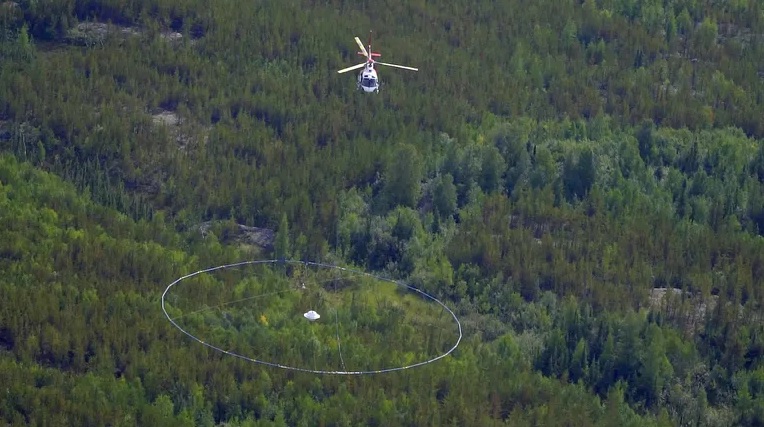As the world works to transition from fossil fuels to renewable energy sources, we’ll extract less oil and gas from the Earth and more minerals like lithium, cobalt, and nickel. Demand for these materials has skyrocketed in the last few years, and will only continue to grow as we implement more solar panels, electric cars, batteries, and wind turbines. Locating and mining critical minerals is costly, slow, and difficult. But a Berkeley-based startup called KoBold Metals is using artificial intelligence to make the process easier.
They must be onto something, because the company was declared a unicorn earlier this summer after raising $200 million in funding, led by VC powerhouses Breakthrough Energy Ventures (that’s the venture capital firm founded by Bill Gates and backed by Jeff Bezos and Jack Ma) and Andreessen Horowitz.
KoBold says its aim is to “transform mineral exploration from a manual, judgment-guided, trial-and-error process into a data-driven and scalable science,” with a specific focus on metals for electric car batteries. The company won’t actually be doing any mining itself—it will locate new deposits then partner with mining companies, acting as an advisor to help them extract the metals more efficiently.
KoBold has a couple different tools with which to go about this. Its data system is called TerraShed, and it’s a consolidation of all the public-domain geoscience data that was previously spread across many sources and represented in different ways. The data could include anything from maps showing the type of rock in a given location to geochemical measurements of element concentration in rock or soil samples to satellite imagery measuring the spectral reflectance of minerals at the Earth’s surface—and much more.
TerraShed brought all these data sources together and standardized the way their information is represented. Its algorithms crunch relevant data for each stage of the mineral exploration process, starting with the search for new deposits all the way through to building a new mine.
Machine Prospector is KoBold’s tool to make sense of all this data and use it for decision-making. It’s made up of machine learning models trained on historic geological data. Similar to how AI can model the structures and interactions of millions of proteins in a fraction of the time it would take a human, the technology is critical to KoBold’s operations because of the sheer amount of data involved and the endless ways it can be combined to yield different results—or in this case, useful information.
KoBold doesn’t just use existing geological data, it also seeks out new information. One way it does this is by hanging a giant metal detector from a helicopter that flies around looking for ore deposits. The transmitter coil loop is 35 meters (115 feet) in diameter, and it detects induced currents coming from metals that are deep underground.

As the company points out on its website, most of the world’s mineral deposits that can be considered low-hanging fruit—because they’re relatively close to the Earth’s surface rather than thousands of feet underground—have already been discovered. To power the renewable world of the not-too-distant future, we’re going to need a lot more of those minerals, and they’re going to be harder to find than existing deposits were.
KoBold is currently exploring over 60 possible projects on 3 different continents.
Image Credit: KoBold Metals
- SEO Powered Content & PR Distribution. Get Amplified Today.
- PlatoData.Network Vertical Generative Ai. Empower Yourself. Access Here.
- PlatoAiStream. Web3 Intelligence. Knowledge Amplified. Access Here.
- PlatoESG. Automotive / EVs, Carbon, CleanTech, Energy, Environment, Solar, Waste Management. Access Here.
- PlatoHealth. Biotech and Clinical Trials Intelligence. Access Here.
- ChartPrime. Elevate your Trading Game with ChartPrime. Access Here.
- BlockOffsets. Modernizing Environmental Offset Ownership. Access Here.
- Source: https://singularityhub.com/2023/08/30/ai-is-turbo-charging-the-search-for-electric-vehicle-battery-metals/
- SEO Powered Content & PR Distribution. Get Amplified Today.
- PlatoData.Network Vertical Generative Ai. Empower Yourself. Access Here.
- PlatoAiStream. Web3 Intelligence. Knowledge Amplified. Access Here.
- PlatoESG. Carbon, CleanTech, Energy, Environment, Solar, Waste Management. Access Here.
- PlatoHealth. Biotech and Clinical Trials Intelligence. Access Here.
- Source: https://zephyrnet.com/ai-is-turbo-charging-the-search-for-electric-vehicle-battery-metals/

